BLU-RAY STREET DATE 11/24/20
KINO LORBER STUDIO CLASSICS

Like everyone else in the late 1970’s, I couldn’t get enough of Star Wars. George Lucas’ space adventure was a colossal cultural event that shifted the way Hollywood made and marketed movies going forward. But in the short term, what it meant was that everyone wanted to make more ‘Space Opera.’ Star Wars knockoffs were coming out of Tinsel Town at a (ahem) fast-and-furious pace. These not only appeared all over the big screen, but the small screen had its fair share too. Two of the more popular space adventures shows had their genesis with the same man: prolific TV producer Glen A. Larson. While his initial brainchild was the more serious-minded Battlestar Galactica, he also produced a show that was meant to be a lighter, breezier affair: Buck Rogers in the 25th Century. Based on a property that debuted in the 1920s, Buck Rogers is, at its best, pure popcorn sci-fi fun. Buck Rogers is not often at its best.
As I’m sure you all know, William ‘Buck’ Rogers is a twentieth century man who is accidentally placed into suspended animation. He is revived 500 years later, and has all sorts of adventures in space, using his unique status as a man out of time to his advantage in various ways. He first appeared in a series of stories by author Phillip Francis Nowlan published in Amazing Stories in 1929 (where his first name was originally Anthony). In the stories, he is put to sleep when he encounters a ‘radioactive gas cloud’ which puts him to sleep. He awakens in 2419 and uses the skills he learned as a soldier in World War I to help America throw off the shackles of an invading army.
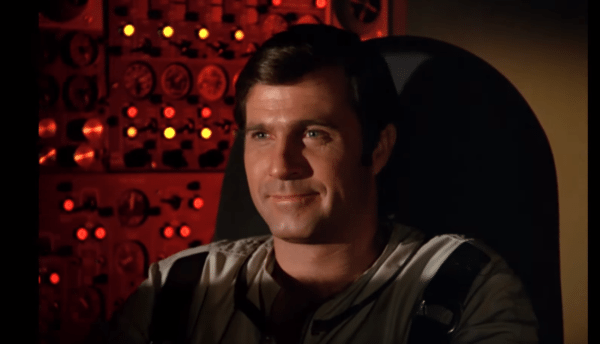
The character proved successful enough that before too long he began showing up in other media. His adventures could be found in comic strips, comic books, Big Little Books (illustrated adaptations of the strips), and soon on the radio. Buck would make the jump from the 25th Century onto the big screen in 1939’s serial Buck Rogers starring Buster Crabbe . Rogers soon made his television debut in the early 1950s.
Buck Rogers wasn’t exactly a household name in the late 1970s, but studios were grasping at anything they could in order to capture some of that Star Wars magic. Buck Rogers, being an existing IP in the space opera genre, made him an ideal candidate for a comeback. Larson and Universal Television began developing Buck Rogers as a series of television movies, similar to their initial plans for Battlestar Galactica. When Galactica‘s pilot was released theatrically overseas, however, it proved a box-office success. They decided to do the same with Buck Rogers, this time releasing it initially in North America. Again, the movie made a nice profit (relative to its budget). This prompted Universal to switch gears from the TV movies to a weekly show.
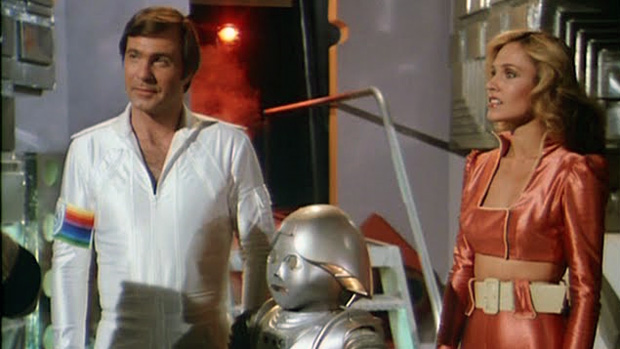
In the movie, Roger’s origin is updated for the late-twentieth century audience. In this case, William ‘Buck’ Rogers is an astronaut launched into deep space in the year 1987. He encounters a cosmic gas cloud and is frozen, only to be revived in the year 2491! He instantly becomes involved in a plot by the sinister Draconians who want to disable the protective shield around Earth and invade. Buck- with the help of his new allies, Colonel Wilma Deering, Doctor Heur, Doctor Theopolis (a sentient hubcap), and Twiki- must not only adjust to being a man 500 years out of time, but also thwart the Draconians and protect Earth!
I’ll be the first to admit that watching Buck Rogers for the first time in I don’t know how long, the most overwhelming feeling I had was one of deep nostalgia. I have vague memories of watching it in the theater during its initial release. The scene where Buck explores the ruins of Old Chicago and finds his parents’ graves remains a strong memory. I did not remember the absolutely bonkers opening credit sequence, where a group of beautiful women writhe suggestively on the film’s neon-lit logo, over which plays the soft ballad ‘Suspension’ sung by Kipp Lennon (a peppier instrumental version of which was used for the show’s credit sequences).
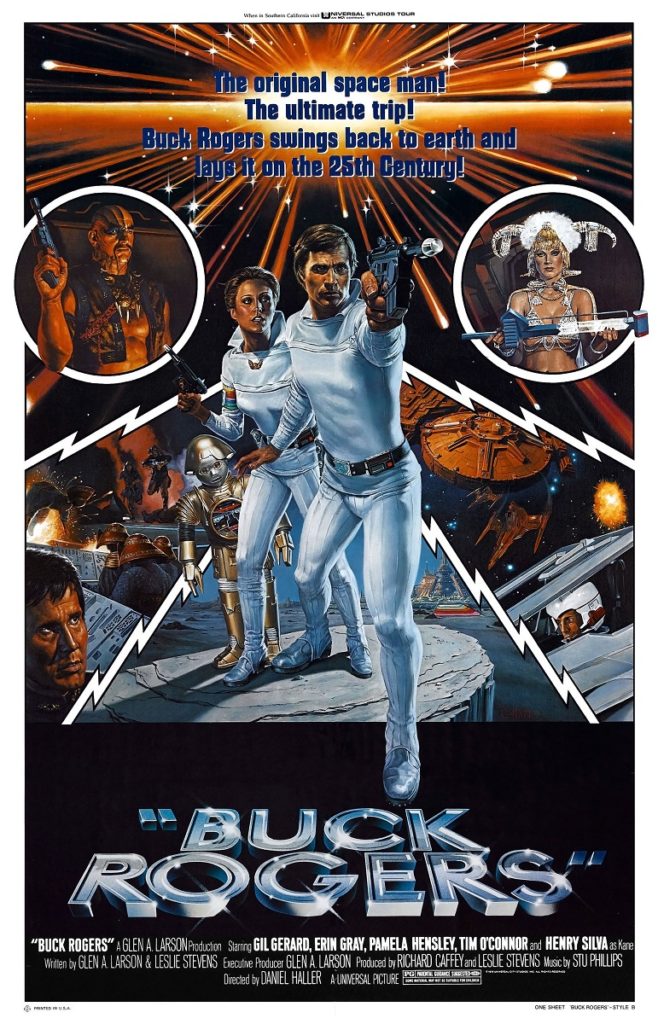
The movie itself, divorced from any fond childhood memories, is… fine. Gerard has a light, blandly charismatic presence that gives the film a fun center. Pamela Hensley, as Princess Ardala of the Draconians, really sinks her teeth into her part. No one else brings much personality to their character. Apologies to Erin Grey, but in her defense, Deering is an underbaked role here. She has much more to do as the series progresses. The effects work is iffy. The models look great, but the compositing is really rough in places. Like with Galactica, a lot of the model effects would be reused time and again during the show’s run. The effects standout are the great matte paintings by artist Sid Dutton. They look fantastic.
The movie would be reedited to serve as the show’s two-part pilot when the show premiered later in 1979. A few minutes of footage was added to ensure a proper running time, and a couple of other minor changes were made to help maintain continuity with the series proper. For instance, a character is killed off in the movie, but survives in the television series. The series would not only continue with the film’s goofy, light-hearted tone, but would play that up even more, as some of the darker elements of the movie, such as the radiation-scarred mutants and the ruins of old Earth, would be left by the wayside.
The first season of Buck Rogers would show off the best, and the worst, of the show. The first proper episode after the pilot was a feature-length show, “Planet of the Slave Girls.” Buck, Wilma, and Twiki must investigate how the pilots for Earth’s Space Defense forces are being poisoned. Their search brings them to the planet which supplies Earth with its food disks. The planet, though ostensibly run by its governor (played by Roddy McDowall!), is under the thrall of a cult leader named Kaleel, and played with a double helping of ham and cheese by Jack Palance. When a fighter squadron arrives to help fend off Kaleel’s own starfighters, they are led by an old timer, Gordon, played by none other than Buster Crabbe himself (Gordon, get it!). “Where’d you learn to fly like that?” Rogers asks Gordan at one point. “I’ve been doing this since before you were born!” Gordon replies! Not exactly true, in universe, but certainly the case between Crabbe and Gerard.
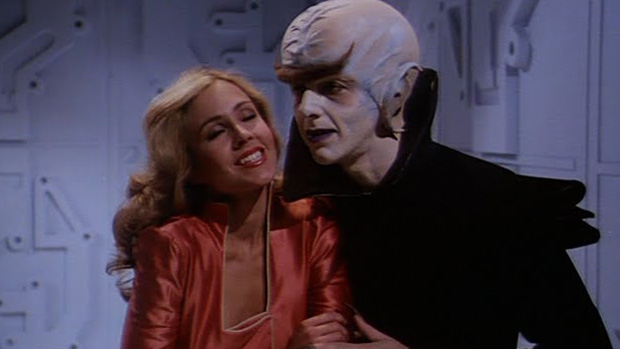
The remainder of the first season swings between pulpy fun and the not-so-fun misfire. “Vegas in Space” has Buck and Wilma go undercover to rescue the kidnapped daughter of a notorious crime boss (played by Cesar Romero). “The Plot to Kill a City” has another Batman alum, Frank Gorshin, playing the leader of a terrorist cell who plots to destroy New Chicago. “Cosmic Whiz Kid” guest-stars Gary Coleman, as a ten-year-old genius from the twentieth century, who’s been elevated to the president of another planet. “Space Vampire” has Wilma Deering threatened by a Nosferatu knock-off who comes aboard her space-station aboard a derelict space transport named the S.S. Demeter. Dracula fans will get the reference. One of the show’s more infamous episodes, “Space Rockers,” features Jerry Orbach as an evil music producer who wants to use rock music to cause the galaxy’s youth to riot and destroy. Considering Rogers was the one who reintroduced Rock and Roll to the 25th century, it’s surprising how quickly it gained popularity throughout the Milky Way. Other notable guest-stars throughout the season include Jamie Lee Curtis, Peter Graves, Woody Strode, Julie Newmar (more Batman!), Ray Walston, and Night Court‘s Markie Post and Richard Moll. Pamela Hensley would also return, reprising her role as the villainous Princess Ardala.
The second season brought some notable challenges to the television show. An actor’s strike delayed work on the second season. Furthermore, Gil Gerard was unhappy with the direction the show had taken, and had come to loggerheads with the showrunners during the first season. He was angling for a more serious tone, and hated how Buck’s character was relegated mostly to just being a wiseass. With the delay in production for the second season, the show changed producers, and retooled with a whole new concept. Instead of defending Earth from external threats, Buck, Wilma, and Twiki were now stationed aboard the Earth explorer vessel Searcher, whose mission was to roam the galaxy looking for the lost tribes of Humanity among the stars. To placate Gerard, storylines were more serious-minded, tackling weightier issues. New characters, such as Admiral Asimov and Dr. Goodfellow came on board, and old ones, such as Dr. Heur and Dr. Theopolis, were lost. Twiki remains, but was not voiced by Mel Blanc for the majority of the season.
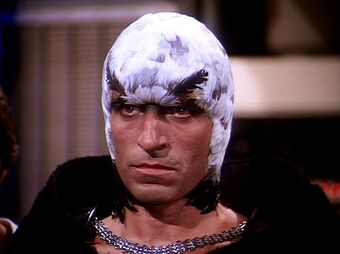
The most prominent newcomer to the second season was the alien bird-person called simply Hawk. We meet him in the season’s first episode “Time of the Hawk,” where he vows vengeance upon all humans when his village, the last of the bird-people, are wiped out. Rogers is able to make the case that “Not all Humans” are terrible, murderous marauders, and Hawk joins the Searcher in hopes of finding other bird people somewhere in the galaxy.
Unfortunately, audiences didn’t turn out for the revamp, and the show suffered declining ratings. Gerard soon became unhappy again, this time with the new “Star Trek” style direction, and eventually the studio decided enough was enough. The show was cancelled midway through the second season. Buck Rogers flew no more.
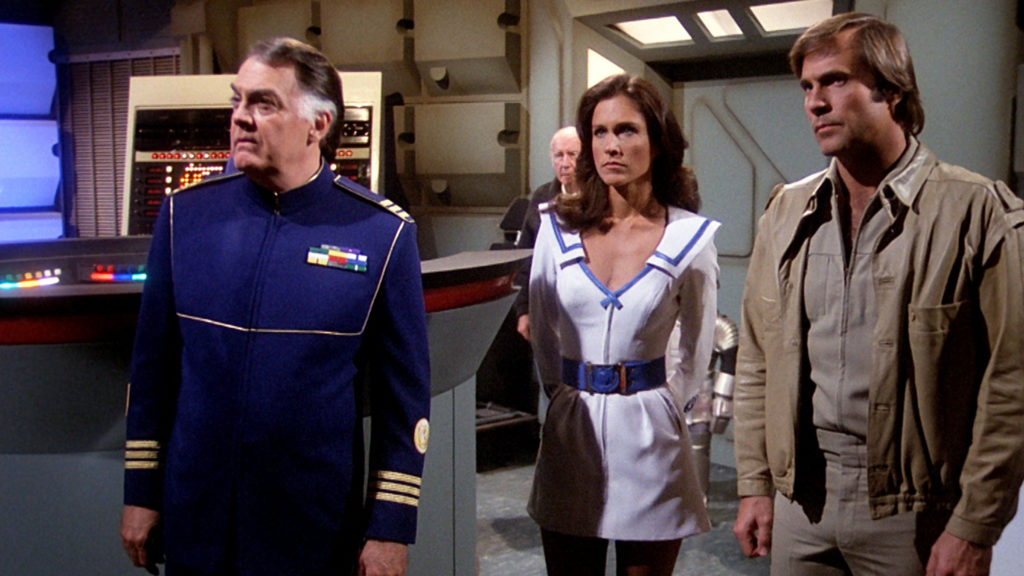
In the age of home media, however, the dead truly never die. The theatrical movie was released on VHS, Betamax, Laser Disc, and DVD. And the series has been released on videotape and dvd by several different publishers as well. The latest set, released by Kino Lorber, is the first time both the series and the theatrical movie have been released in North America on Blu Ray in high definition. The show is remastered in 2K Hi-Def. As you would expect, the color and details look fantastic, but hi-def doesn’t do a show like Buck Rogers any favors. Details that fuzzy CRT screens would blur over are brought into sharp focus, making stunt doubles and Styrofoam props all too obvious.
But I’m sure no one is watching Buck Rogers expecting high end production values. Like most Kino Lorber releases, the true treasure in this set is with the supplemental materials. The movie comes with its own audio commentary by film historians Steve Mitchell and Nathaniel Thompson. It also has a vintage special theatrical preview, radio ads and the theatrical trailer. Select episodes of each season also have their own commentary tracks by author Patrick Jankiewicz. The season two disc also contains contemporary interviews with series stars Erin Gray and Thom Christopher. They discuss their casting, the development of their characters, and what the show has come to mean to them and their fans over the years since its cancellation.
And this complete is a real ‘one for the fans’ affair. Buck Rogers didn’t end up being the cultural touchstone that Battlestar Galactica became, but it is remembered very fondly by those of my generation, and with good reason. Kino Lorber’s new Blu-Ray is an excellent way to celebrate that.
Note that the images used in this article are in no way representative of the image quality for the blu-ray set. They are just meant as illustrations to break up a long-winded review.

